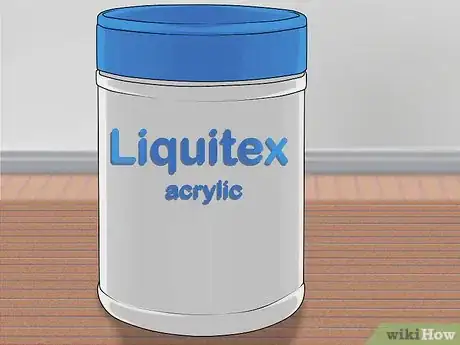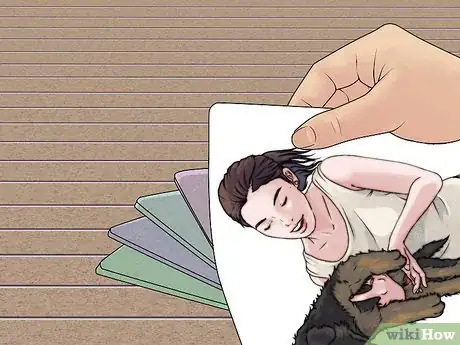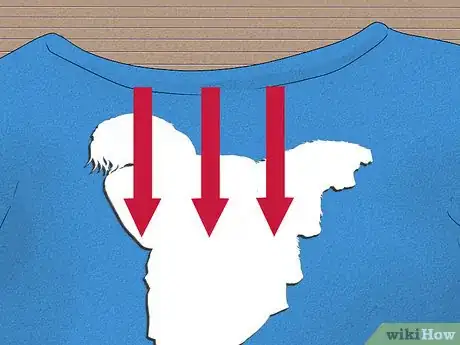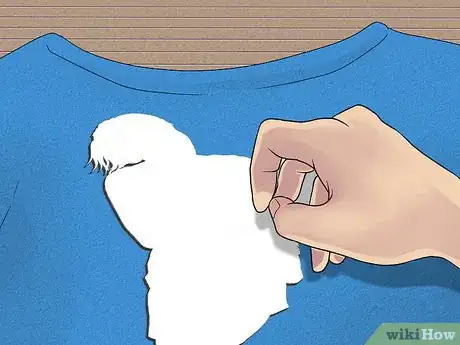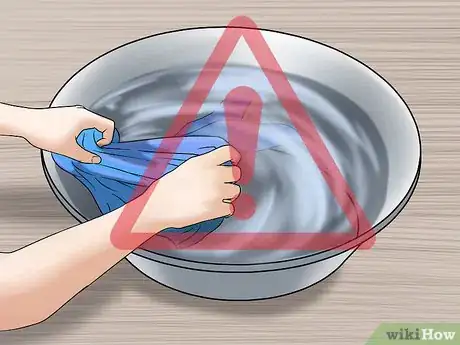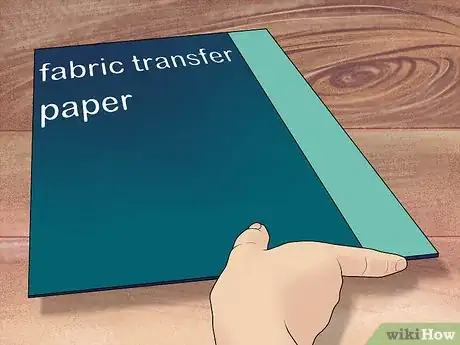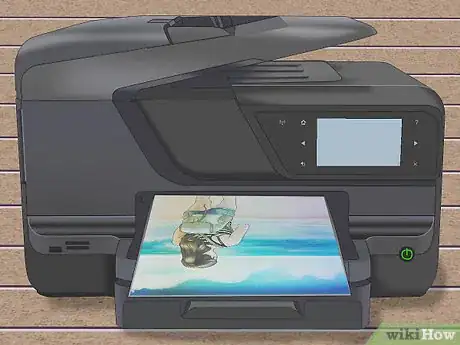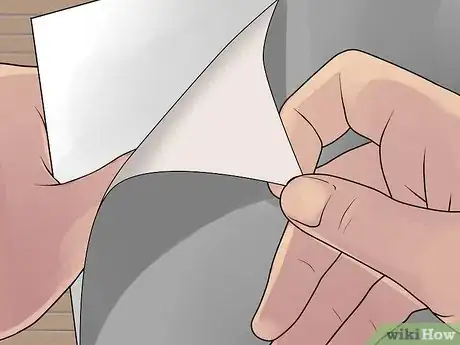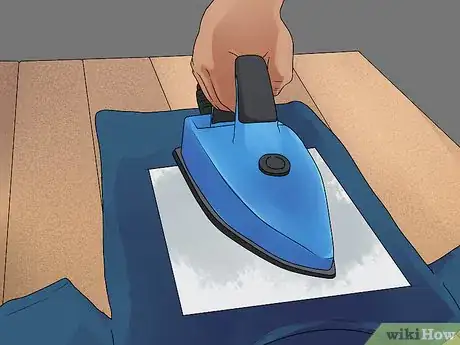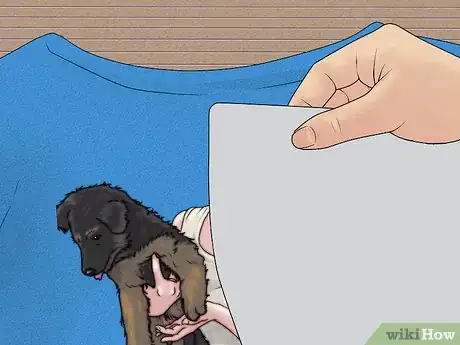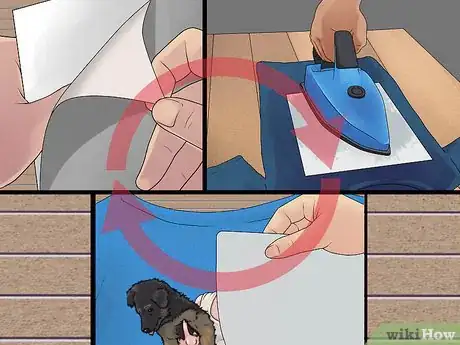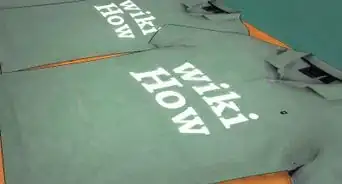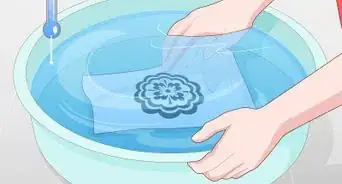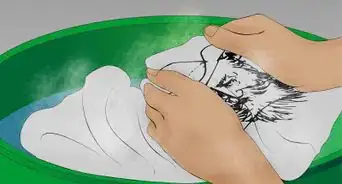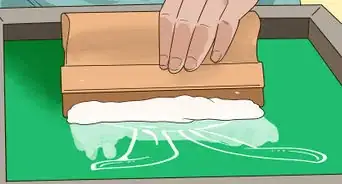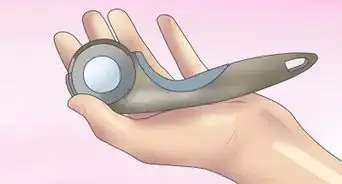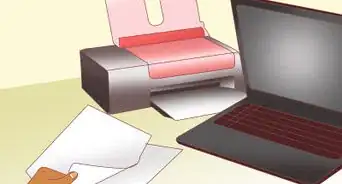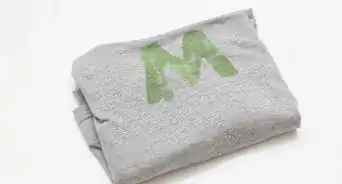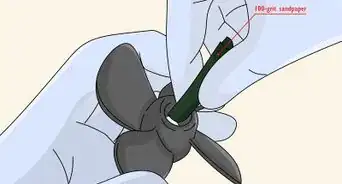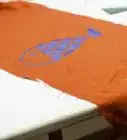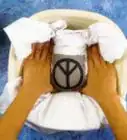This article was co-authored by wikiHow Staff. Our trained team of editors and researchers validate articles for accuracy and comprehensiveness. wikiHow's Content Management Team carefully monitors the work from our editorial staff to ensure that each article is backed by trusted research and meets our high quality standards.
There are 10 references cited in this article, which can be found at the bottom of the page.
wikiHow marks an article as reader-approved once it receives enough positive feedback. This article received 13 testimonials and 85% of readers who voted found it helpful, earning it our reader-approved status.
This article has been viewed 474,007 times.
Learn more...
Have you ever wanted to transfer a special photo onto fabric, t-shirts, or bags? As it turns out, you can do just that in a day with only a few supplies. It’s a great craft idea for children’s parties, as well as a fun way to customize decor, accessories, and clothing. There are two methods for transferring photos, and you can should be able to find the products you'll need at your local craft store.
Steps
Using Gel or Decoupage Medium
-
1Choose your medium. Liquitex acrylic gel medium is cheap, and can be found near the paint at any craft store. You can also search for Mod Podge Photo Transfer Medium. This is a specific kind of Mod Podge-- regular Mod Podge will not work for fabric. [1] On the internet, you might find more specialized mediums.[2]
- If you have trouble finding what you are looking for at a craft store, ask someone who works there.
-
2Choose your fabric. Most people want to use photo transfers for T-shirt fabric or canvas, which is pretty foolproof. Synthetic fabrics are a little bit more difficult to transfer to. If you are planning to transfer to synthetic fabric, make sure that you test it out with similar fabric first. Your transfer will probably not fare well on stretchy fabric.
- The stretchier the fabric, the more wear and tear your transfer will have to endure. This is why transfers are often on linen or canvas.
Advertisement -
3Choose your image and cut it out. If you use a gel medium, you will need a laserjet image. You can also use old magazine pages or newspaper images.[3] Some people say that if you use Mod Podge transfer medium, you can use inkjet images as well as laserjet images.
- If your image has text, you need to flip it horizontally on the computer in order to get the image to transfer correctly. Most programs that you use to open an image have this option; you do not need to use Paint or Photoshop.
-
4Cover the front of your image with your medium. You can use a regular bristle brush to do this.
- The coat of medium should be quite thick. You don’t want to be able to see the image when you are done coating.
-
5Press your image onto the fabric. Make sure that all of it is touching the fabric, and smooth out any air bubbles. Let it sit over night.
- Some people say that it is not necessary to let your image sit overnight if you use gel medium. If you peel off the paper before it has dried completely, your transfer will appear faded.[4]
-
6Wet the back of the image, and rub the surface with your fingers. The paper will start coming off. Continue to rub it until all the paper is gone.
- If you are using the transfer for display, you can use another coat of gel medium to protect it.
-
7
Using Photo Transfer Paper
-
1Purchase a package of fabric transfer paper. This is available at Best Buy, Walmart, Michael's, and other craft and office supply stores. Make sure that the paper that you choose matches the kind of printer you have, so that you are not using an laserjet printer to print on inkjet transfer paper.[7] .
- Pay attention to details listed on the package. Most iron-on transfers require cotton or cotton blend fabrics. If your garment or item is dark colored, look for 'Transfer to Dark' paper.
-
2Print and cut out your transfer. Upload your photo to your computer, and use Paint or a photo program to adjust the size of the photo to suit your needs.
- When you cut out your image, round the corners of the photo. That way, the corners will not peel after multiple washings. If you have a graphic, cut as close to the edges as possible, and round your corners. Never have sharp edges on your transfer.
- Keep in mind that any white spaces in the photo will be the color of your garment or item.
-
3Take the backing off of your paper. Apply the transfer face-down on the fabric, so that the printed side is against the fabric.
- Take care not to tear the image as you peel the backing off.
-
4Iron your image onto the fabric. Make sure that your iron is very hot, and is not emitting any steam, as this will ruin the transfer. Iron on a hard, non-porous surface instead of an ironing board.
- Most irons have a setting that you can alter to stop them from emitting steam, but you can also make sure there’s no water in the iron.
-
5Peel off the paper. You can peel one corner to check your image first. If it is spotty, you can carefully put it back and iron some more. Some people like the distressed look of half-transferred images, so feel free to experiment if this is something you might like.
- Do not wash your item for 24 hours.
-
6Try again. [8] If your iron-on transfers did not work as well as you hoped, try doing things differently the next time.[9] You may have printed on the wrong side of the paper. If your image faded, you may have washed before waiting 24 hours. If your image peeled off, you may not have rounded your edges very well.
- You need to iron on a hard surface, keep your iron at maximum heat, and apply a great deal of pressure when ironing. Transfers require a lot of heat and pressure in order to stick, so if you do not apply enough hot, even pressure, parts of your transfer may not stick.
-
7
Community Q&A
-
QuestionIs there somewhere that will transfer a photo to fabric for me?
 Community AnswerYes, you can go to a tailor or you can have someone do it at a craft store, such as Michaels or Hobby Lobby.
Community AnswerYes, you can go to a tailor or you can have someone do it at a craft store, such as Michaels or Hobby Lobby. -
QuestionIs there something I can apply over the transfer to keep it from fading?
 Community AnswerNot really. What you can do, however, is wash the garment inside out in cold water, and air dry it (as opposed to using the dryer). This will help keep the transfer from fading.
Community AnswerNot really. What you can do, however, is wash the garment inside out in cold water, and air dry it (as opposed to using the dryer). This will help keep the transfer from fading. -
QuestionI have a customer who wants a photo of his motorcycle transferred to his denim biker jacket. What's the easiest way to do this?
 Community AnswerTake the image and jacket to an embroiderer who uses electronic machinery. This is the best way to do it.
Community AnswerTake the image and jacket to an embroiderer who uses electronic machinery. This is the best way to do it.
Things You'll Need
For the Medium Transfer Method
- Gel Medium or Mod Podge photo transfer medium
- A foam brush or regular brush
- An image
For the Transfer Paper Method
- Inkjet printer
- Fabric transfer paper
- Cotton or cotton/poly blend fabric or garment
- Iron
- Hard, non-porous surface
References
- ↑ https://www.youtube.com/watch?v=LHYPgYDHQcA&feature=youtu.be&t=1m49s
- ↑ https://www.youtube.com/watch?v=QMWhEAtPrew&feature=youtu.be&t=6s
- ↑ http://www.abeautifulmess.com/2011/10/how-to-transfer-a-photo-to-fabric.html
- ↑ https://www.youtube.com/watch?v=sntashzep2I&feature=youtu.be&t=6s
- ↑ http://dealnews.com/features/How-to-Make-Your-Clothes-Last-Longer/554888.html
- ↑ http://lifehacker.com/top-10-clothing-annoyances-fixed-1477546618
- ↑ http://thegraphicsfairy.com/union-jack-shield-pillow-iron-on-transfer-printable/
- ↑ http://www.dharmatrading.com/techniques/inkjet-transfer-paper.html
- ↑ http://www.photopaperdirect.com/blog/?p=272
About This Article
To transfer photographs to fabric, start by brushing some acrylic gel or photo transferring medium onto the front of your photograph. If you use acrylic gel, your photo will need to have been printed with a laserjet printer. Next, press the coated side of the photo down onto the fabric and let it sit overnight. Finally, wet the back of the photo and use your fingers to rub the paper off until you're left with just the photograph on the fabric. To learn how to transfer photographs to fabric using photo transfer paper, scroll down!
